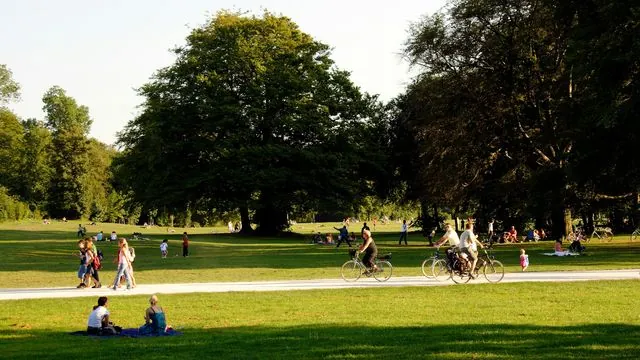
**Unlocking the Power of Nature: How Green Spaces Could Shield Children from Neurodevelopmental Disorders**
2025-07-23
Author: Wei Ling
Imagine a world where simply living near trees and parks could protect our children from serious developmental disorders. New research from Rutgers University suggests that children who grow up surrounded by greenery might have a significantly lower risk of conditions like ADHD and autism.
**The Groundbreaking Study: What Did They Find?**
Published in *Environment International*, this comprehensive study analyzed over 1.8 million mother-child pairs from several U.S. states, focusing on data gathered from 2001 to 2014. By employing satellite imaging to assess vegetation levels around mothers’ homes during critical developmental periods—before conception, during pregnancy, and in early childhood—researchers discovered a compelling link between green space exposure and a lower incidence of neurodevelopmental disorders.
The study took into account various individual and community-level factors to ensure the findings were robust and reliable, demonstrating a clear relationship between lush environments and improved childhood health.
**Timing is Everything: How Greenery Affects Development**
The fascinating aspect of this research lies in how the timing of exposure to green spaces dramatically influenced developmental outcomes. For instance, exposure during pregnancy was associated with a decreased risk of autism, while preconception greenery was linked to fewer cases of intellectual disabilities. Additionally, children who had access to green spaces during their early years were less likely to experience learning difficulties.
Stefania Papatheodorou, the senior author of the study, pointed out that these protective associations were particularly significant among urban children, where natural environments are often scarce.
**A Call to Action: Rethinking Urban Planning**
This groundbreaking research emphasizes that enhancing access to green spaces in urban settings could be a crucial strategy for promoting healthy brain development in children, particularly for those from disadvantaged backgrounds. Papatheodorou asserted, "Increasing green space access could serve as an effective environmental strategy to help curb the risk of neurodevelopmental disorders among vulnerable populations."
As cities continue to expand, traditional urban planning needs a green revamp to create environments conducive to healthy growth. The study points to potential long-term benefits if we prioritize nature in urban design.
**Looking Ahead: What’s Next for Research?**
Future investigations aim to dissect the biological and environmental mechanisms behind these intriguing findings. Researchers are also keen to examine how different types of green spaces—like parks versus trails—may uniquely impact child development.
This research not only underscores the importance of nature in early life but also casts a spotlight on a pressing public health issue: the need to reduce health disparities among children of different backgrounds. The message is clear—let's nurture our future generations by embracing the healing power of green spaces.




 Brasil (PT)
Brasil (PT)
 Canada (EN)
Canada (EN)
 Chile (ES)
Chile (ES)
 Česko (CS)
Česko (CS)
 대한민국 (KO)
대한민국 (KO)
 España (ES)
España (ES)
 France (FR)
France (FR)
 Hong Kong (EN)
Hong Kong (EN)
 Italia (IT)
Italia (IT)
 日本 (JA)
日本 (JA)
 Magyarország (HU)
Magyarország (HU)
 Norge (NO)
Norge (NO)
 Polska (PL)
Polska (PL)
 Schweiz (DE)
Schweiz (DE)
 Singapore (EN)
Singapore (EN)
 Sverige (SV)
Sverige (SV)
 Suomi (FI)
Suomi (FI)
 Türkiye (TR)
Türkiye (TR)
 الإمارات العربية المتحدة (AR)
الإمارات العربية المتحدة (AR)